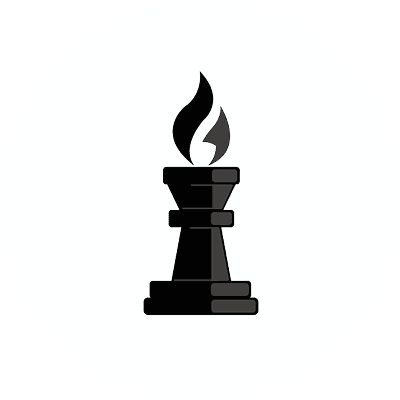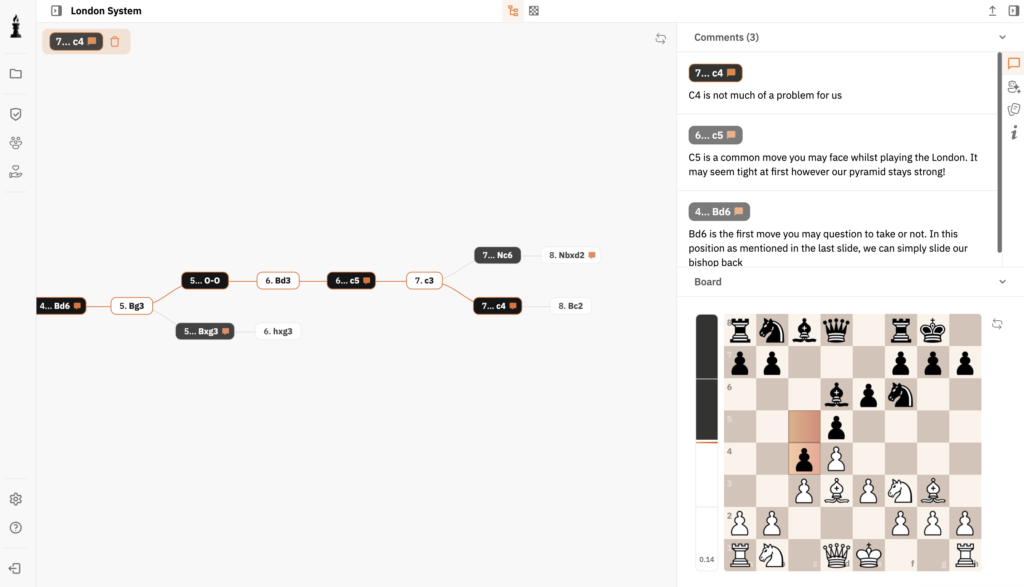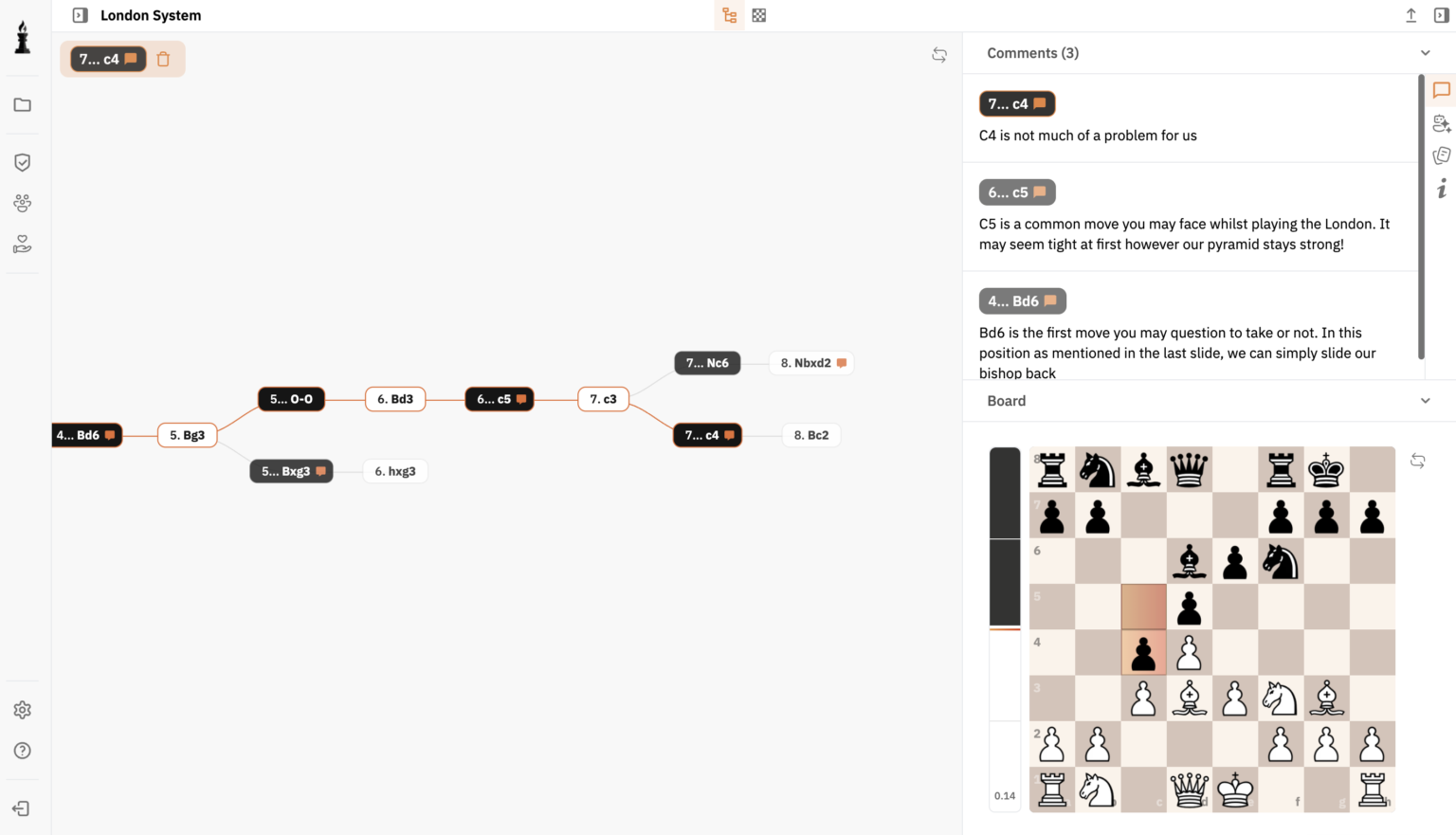Add tabs with possible transpositions to all repertoires in your directory
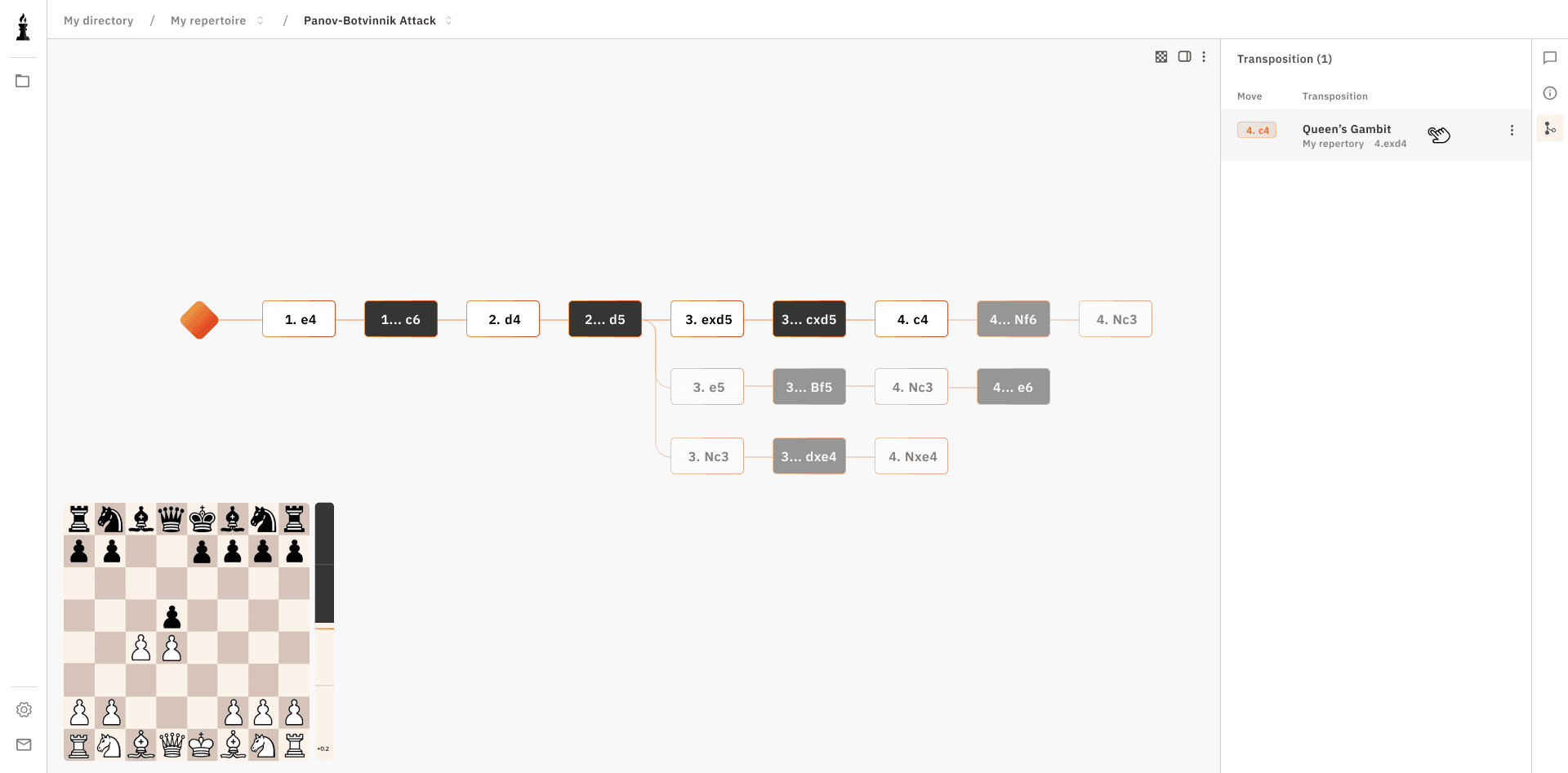
By clicking on a move in your ChessFlare tree, identical positions that appear multiple times in yours database will be available in the transpositions tab. This allows you to easily visualize how different sequences of moves can lead to the same position.
Comparator of move sequences that lead to an identical position.
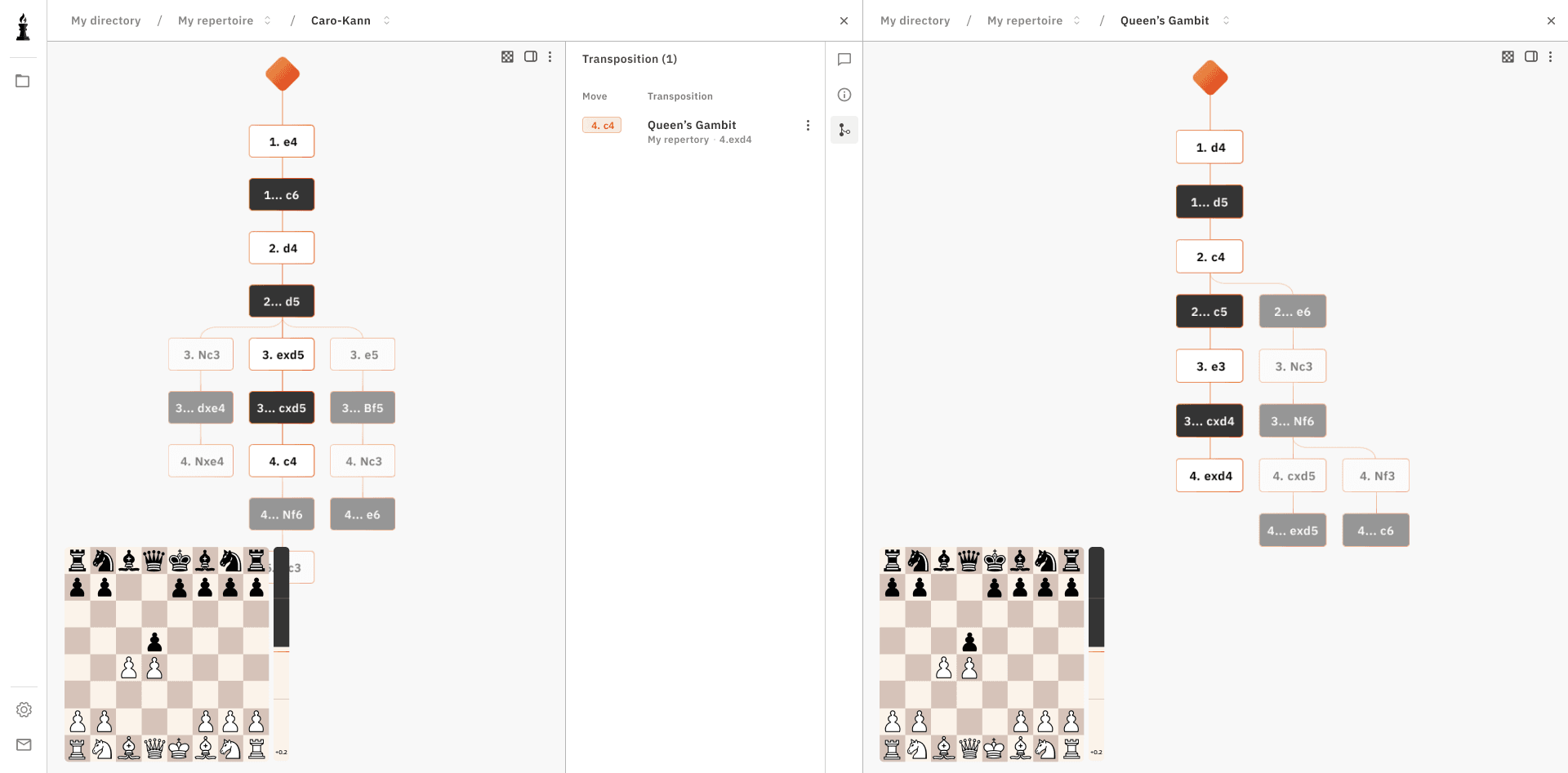
We have conceptualized a page that allows you to compare sequences of moves that lead to the same position. This enables you to visualize two lines, essentially a transposition, in a move tree structure.
FAQ
In chess, a transposition refers to a situation where a player reaches a position that could have arisen from a different sequence of moves. Essentially, it’s when you arrive at the same board position through a different move order than the typical or expected one.\n\nFor example, in the opening phase of the game, there are several well-known sequences of moves, called openings. Sometimes, players can reach the same opening position via a different set of moves. This can be intentional, as players might use transpositions to avoid certain lines of play or to confuse their opponent by reaching familiar positions through unexpected move orders.\n\nTranspositions are an important aspect of chess strategy, as they can lead to advantages by steering the game into positions where one player is more familiar or comfortable, or by avoiding lines of play that are unfavorable. They require a deep understanding of various positions and move sequences, as well as the ability to recognize when a transposition is occurring.
Studying transpositions in chess is crucial for deepening your understanding of the game. Transpositions occur when different sequences of moves lead to the same position on the board, offering players the flexibility to reach familiar positions through various pathways. By mastering transpositions, a player can navigate openings more effectively, avoid opponent’s preparation, and maintain greater control over the direction of the game. This ability to recognize and exploit transpositions allows for better decision-making and adaptability, ultimately leading to stronger strategic play.
Memorizing chess openings effectively hinges on the structured discipline that comes from maintaining a well-organized repertoire. By systematically building and updating your repertoire, you create a framework that guides your learning process, allowing you to focus on the most relevant and essential lines. This structure not only helps you memorize sequences of moves more efficiently but also reinforces your understanding of the underlying strategies and ideas behind each opening. Regularly reviewing and practicing your repertoire ensures that your knowledge remains sharp and adaptable, enabling you to confidently navigate various positions on the board. In essence, maintaining a disciplined repertoire is the cornerstone of a successful approach to mastering chess openings, as it provides a clear, methodical path to deepening your expertise.
Memorizing chess transpositions becomes significantly more manageable with the help of tools like ChessFlare, which automatically detects transpositions and allows you to compare the sequences leading to the same position. This automatic detection is crucial because it highlights the different move orders that can result in identical positions, giving you a deeper understanding of how flexible your opening repertoire can be. By comparing these sequences side by side, ChessFlare enables you to recognize and internalize the key transpositions more effectively. This systematic approach not only enhances your memory but also sharpens your strategic thinking, allowing you to navigate complex positions with greater confidence. In essence, ChessFlare’s ability to detect and compare transpositions transforms a challenging aspect of chess into a more intuitive and accessible part of your learning process.
